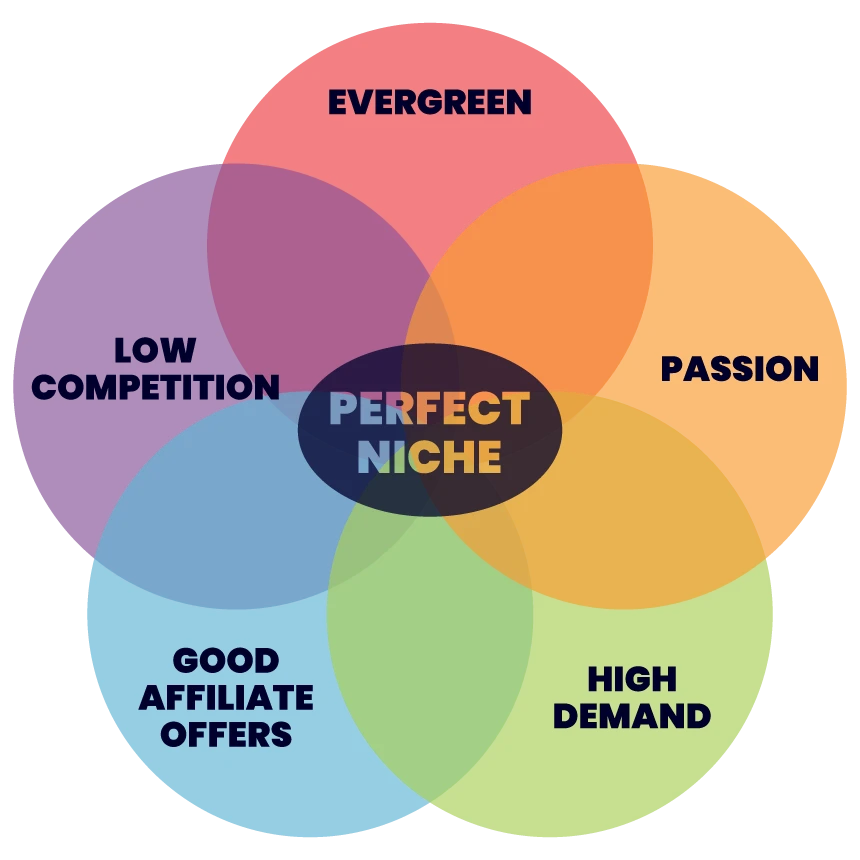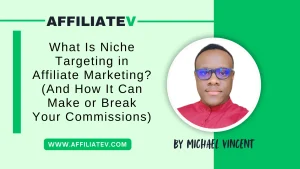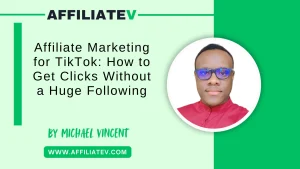
Everyone loves the idea of passive income—money rolling in while you sleep. No boss. No schedule. Just freedom. That’s why so many people jump into affiliate marketing. They see success stories, flashy income screenshots, and gurus promising an easy path to riches.
But here’s the reality. Most fail. About 90% of affiliate marketers never make substantial income. They put in time, effort, and sometimes even money, but nothing clicks. Frustrated, they quit.
Why? It’s not because affiliate marketing doesn’t work. It’s because most people go in blind. They pick the wrong niche, chase quick wins, or rely on spammy tactics. Some expect instant results, and when they don’t get them, they assume the whole thing is a scam. Others just follow bad advice.
But there’s another side to this. The 10% who make it. They don’t just get lucky. They follow the right strategies. They focus on the long game. They build trust, create value, and stay consistent.
The difference between failure and success isn’t talent or luck. It’s knowing what works and actually doing it. This article breaks down why 90% of affiliate marketers fail and the key steps to make sure you’re in the top 10% who thrive.
Let’s get into it.
Key Takeaways
- Most affiliate marketers fail because they expect quick money. Success takes time, effort, and a solid strategy. Be patient and committed.
- Choosing the wrong niche can set you up for failure. Pick a niche that you enjoy and that has real demand, not just one that seems profitable.
- Low-quality content won’t build trust or drive sales. Focus on creating valuable, helpful, and engaging content that genuinely helps people.
- Relying on just one traffic source is risky. Diversify with SEO, social media, email marketing, and paid ads to build a sustainable business.
- Ignoring email marketing is a missed opportunity. Building an email list helps you stay connected with your audience and increases long-term earnings.
- People buy from those they trust. Promoting products you don’t believe in or using shady tactics will harm your reputation and income.
- Giving up too soon is the biggest mistake. Most people quit before they see results. Success comes to those who stay consistent and keep improving.
- To be in the top 10%, focus on value and strategy. Choose the right niche, create great content, build multiple traffic sources, and stay committed to long-term success.
If you apply these lessons, you’ll put yourself ahead of most affiliate marketers and increase your chances of lasting success.
Section 1: The 7 Biggest Reasons Why 90% of Affiliate Marketers Fail
1. Lack of Patience and Unrealistic Expectations
Most new affiliate marketers think they’ll make easy money. They hear “passive income” and assume they can set up a website, post a few links, and cash out. That’s not how it works.
Affiliate marketing takes time—months, sometimes years. You’re building trust, learning SEO, testing what works. That’s active effort. The passive part comes later, once you’ve put in the groundwork.
The biggest mistake is expecting fast results. When they don’t see profits in the first few months, they quit. They assume it doesn’t work. But the truth? They didn’t stick around long enough.
I’ve watched countless marketers give up right before things took off. Meanwhile, the ones who stayed consistent, kept learning, and adjusted their approach? They started making real money.
Patience isn’t just helpful—it’s required. If you’re not willing to wait and work, you’ll end up like the 90% who fail.
2. Choosing the Wrong Niche
Most new affiliate marketers chase money instead of picking something they know or care about. Big mistake.
If you don’t understand the niche, how will you create content people trust? If you don’t care about it, how will you stick with it when things get tough?
Passion matters, but demand does too. A niche should have people actively searching for solutions. No audience, no sales. Simple.

Then there’s competition. Some niches are so crowded you’d be a tiny fish in a shark tank. Others are dead zones where no one buys. The sweet spot? A niche with demand but not dominated by giants.
And think long-term. Trends fade. If you jump into a niche just because it’s hot, you’ll be scrambling when it dies out. Pick something that holds up over time.
Want to avoid this mistake? Find a niche where you have interest, people are searching, and competition isn’t impossible. Get those three right, and you’re already ahead of most.
Recommended reading: How to Choose the Best Niche for Your Affiliate Marketing Business
3. Poor Quality Content and Lack of Value
People can smell lazy content from a mile away. If your site is filled with generic reviews or shallow promotions, don’t expect results.
Affiliate marketing is about trust. People don’t buy from strangers—they buy from people who help them make informed decisions. If your content doesn’t answer real questions or solve problems, why would anyone stick around?
For example, if I may ask. How often do you search for something, click a link, and leave because it’s full of fluff? Now, imagine your audience doing the same to your content. That’s lost traffic, lost commissions, and wasted effort.
The fix? Create content that matters. Instead of regurgitating what’s already out there, share real insights. Compare products honestly. Explain what works and what doesn’t. Make recommendations based on experience, not just commissions.
Most importantly, write like a human. Skip the robotic sales pitch. Be real, be useful, and people will keep coming back.
Recommended Reading: Why Valuable Content Wins in Affiliate Marketing (And How to Create It)
4. Inconsistent Traffic Generation Strategy
Relying on one traffic source is like balancing on a one-legged stool. The moment it wobbles, you fall.
Too many affiliate marketers go all-in on one method—SEO, paid ads, or social media—without a backup plan. That’s a mistake. Algorithms change. Ad costs spike. Platforms ban accounts for no reason. When that happens, your income vanishes overnight.
The smartest move here is to diversify. Mix organic, social, and paid traffic. SEO is great, but it takes time. Paid ads work fast, but they’re expensive. Social media builds trust, but engagement fluctuates. Spread your traffic sources so one hiccup doesn’t wipe you out.
Think of it like fishing. If you cast one line, you might get lucky. But if you drop multiple lines in different spots, your odds shoot up. Same idea with traffic—more sources, more chances to win.
Don’t wait until disaster strikes. Start building multiple traffic streams now. Future-you will thank you.
Recommended Reading: Best 15 Ways to Drive Traffic to Your Affiliate Links (Tested and Proven)
5. Neglecting Email Marketing & Building an Audience
Skipping email marketing is like filling a leaky bucket. You pour traffic in, but most of it spills out. No follow-up, no repeat visitors, no long-term value.
Affiliate marketers who ignore email lose out on steady commissions. People rarely buy on the first visit. They need reminders, trust, and the right offer at the right time. Email does all of that on autopilot.
Building an audience isn’t about chasing viral traffic. It’s about collecting emails and staying in touch. A well-crafted email list turns one-time visitors into loyal buyers.
Social media algorithms change. SEO rankings drop. Ads get expensive. But an email list? That’s yours. You control it. No middleman, no sudden traffic dips.
The best part is that email lets you sell without feeling pushy. Share useful tips, product recommendations, and personal insights. When done right, people look forward to your emails instead of ignoring them.
Finally, if you’re not building an email list, you’re leaving money on the table. Fix it now, or keep chasing traffic that never comes back.
Recommended Reading: How to Build a Strong Email List for Your Affiliate Marketing Business
Recommended Reading: 12 Best Free Email Marketing Tools You Need For Your Affiliate Business
6. Ignoring Trust and Authenticity
People buy from those they trust. Simple as that.
Yet, so many affiliate marketers ignore this. They push products they’ve never used, write fake reviews, and slap on over-the-top claims. That might work for a sale or two, but long-term? It kills credibility. Once people feel tricked, they won’t come back. Worse, they’ll warn others to stay away.
Trust isn’t built overnight. It comes from honesty, consistency, and actually caring about your audience. If you wouldn’t recommend a product to a close friend, don’t promote it. If you don’t believe in what you’re selling, people will sense it.
And let’s talk about hype. If a product claims to “make you rich overnight” or “change your life instantly,” run. People aren’t stupid. They know nonsense when they see it. Stick to honest, balanced reviews. Talk about the pros and the cons. Help people make informed decisions instead of tricking them into a quick sale.
Affiliate marketing isn’t just about getting clicks. It’s about building a reputation. If people trust you, they’ll keep coming back. If they don’t, you’re done before you even start.
7. Giving Up Too Soon
Most affiliate marketers quit before they ever see real results. Six months in, they assume it’s not working and walk away. The truth? That’s when things usually start picking up.
This isn’t a sprint. It’s a long game. Google takes months to rank content. Audiences take time to trust. Sales don’t flood in overnight. If you expect instant success, you’re setting yourself up for disappointment.
The trick is staying in it long enough to figure things out. Traffic looks slow? Adjust your SEO. Conversions aren’t great? Test new offers. Feeling stuck? Learn from others who’ve pushed through. The ones who make it aren’t always the smartest—they’re the ones who refuse to quit.
Affiliate marketing pays off for those who stay the course. You don’t need to be perfect. You just need to keep going.
Section 2: How to Be in the Top 10% of Successful Affiliate Marketers
1. Pick a Profitable & Passionate Niche
Most affiliate marketers fail because they chase money without caring about the niche. Bad move. If you don’t enjoy the topic, you’ll burn out fast.
Start with something you actually like. It doesn’t have to be your life’s passion, but you should enjoy learning and talking about it. If the topic bores you, writing content and promoting products will feel like a chore. And trust me, that shows.
That said, passion alone won’t pay the bills. You need a niche that makes money. People should already be spending on it—courses, products, subscriptions, services. If no one’s buying, you’re wasting time.
How to Check If a Niche Works
- Google Trends: See if interest is growing or dying.
- Keyword Research: Use Ahrefs, Semrush, or Ubersuggest to check search volume and competition.
- Forums & Social Media: If people ask questions and discuss the topic, that’s a green light.
The sweet spot? A niche that interests you and has demand. Get this right, and everything else—content, marketing, and sales—gets easier.
2. Master the Art of Content Marketing
Affiliate marketing runs on content. If yours isn’t great, you’re invisible.
People want real value, not generic fluff. They’re searching for solutions, not another sales pitch. That’s where strong content wins.
Write Like a Human, Not a Sales Bot
Blog posts, reviews, and tutorials should sound natural. Be direct. Talk like you’re explaining something to a friend. Skip the hype. If your content reads like a commercial, people will tune out.

Focus on helping first. Show them how a product solves a real problem. Break things down in a way that makes sense. Make them feel like they’re learning something useful, not getting tricked into a sale.
SEO Without the Overkill
Good SEO helps, but don’t write just for search engines. Keywords are important, but stuffing them in every sentence makes your content unreadable. Instead, use them naturally.
Google rewards content that actually helps people. Answer real questions. Cover topics in-depth. If your content is valuable, it ranks. Simple as that.
Video Marketing: Get in Front of Your Audience
Some people read. Others prefer watching. That’s why video is a goldmine.
You don’t need fancy production. A simple, honest review on camera can convert better than a polished blog post. Show the product in action. Speak clearly. Be yourself.
Short videos work too. TikTok, YouTube Shorts, and Instagram Reels are huge for quick, engaging content. Hook viewers fast, deliver value, and send them to your full content for more.
Social Proof Sells
People trust other people more than brands. Use that to your advantage.
If a product has great reviews, mention them. Show testimonials, screenshots, or real-life success stories. Even better, share your own experience. A personal story builds trust faster than any sales page ever could.
Storytelling Makes People Care
Facts inform. Stories sell.
If you just list features, no one cares. But if you tell a story about how a product solved a real problem, people connect. They picture themselves getting the same results. That’s what makes them buy.
Make it real. Make it relatable. And most of all—make it worth reading.
That’s how you create content that gets people to trust you, follow you, and buy through your links.
3. Diversify Traffic Sources
Relying on one traffic source is a mistake. Platforms change. Algorithms shift. If all your traffic comes from one place, you’re vulnerable. Successful affiliates spread their reach across multiple channels.
SEO Brings Free, Long-Term Traffic
Google is still king when it comes to consistent traffic. But ranking takes time. Focus on high-quality content, solid backlinks, and real value. Don’t just chase keywords—answer real questions, solve problems, and build trust. Organic traffic compounds over time.
Recommended Reading: Best SEO Strategies for Affiliate Websites: How to Get Free Organic Traffic
Paid Ads Get Quick Results
SEO is a long game, but ads bring instant traffic. Facebook, Google, and TikTok ads work if you know what you’re doing. The trick is to start small, test different creatives, and track conversions. Dump what doesn’t work. Scale what does. Paid traffic isn’t cheap, but done right, it can bring great results.
Social Media Builds Your Brand
Affiliate links don’t always convert on social media. But attention does. Share helpful content, engage with followers, and build an audience. YouTube is massive for affiliate marketing. TikTok and Instagram Reels are great for quick, engaging content. Test different styles—tutorials, reviews, behind-the-scenes clips. See what sticks.
Recommended Reading: 6 Ways to Boost Social Media Engagement for More Sales
Email = Your Secret Weapon
Social platforms own your audience. But when it comes to the email list, you have full control over it. Build one early. Offer a freebie, a discount, or exclusive content. Then, send emails that feel personal, not salesy. A good list is a steady stream of repeat buyers.
Try Influencer Collaborations
People trust people. Influencer partnerships work, even with small creators. Find ones who align with your niche. Offer them a commission instead of just a one-time payment. They bring traffic—you both make money. Simple.
The top 10% of affiliates don’t wait for traffic. They go where the attention is. If you want long-term success, mix your traffic sources. Keep testing. Keep adapting. The internet moves fast—stay ahead of it.
6. Stay Consistent and Adapt
Most people quit too soon. They expect instant success, and when it doesn’t happen, they bail.
Affiliate marketing isn’t a “get rich quick” scheme. It’s a business. And like any business, it takes time. Set realistic goals for 6-12 months. Expect slow progress at first. That’s normal.
Just keep showing up. Publish content, test offers, and improve what’s working. The ones who stick with it, even when growth is slow, are the ones who win.
But consistency alone isn’t enough. You also have to adapt. Trends shift. Algorithms change. What worked six months ago might not work tomorrow. If you’re not tracking results, you’re flying blind.
Look at your traffic, conversions, and commissions. See what’s performing and what’s flopping. If a strategy isn’t working, don’t cling to it—pivot. Try new content formats. Experiment with different keywords. Test another traffic source.
Success in affiliate marketing isn’t about luck. It’s about persistence and smart adjustments. Stay in the game, keep refining, and you’ll put yourself in that top 10%.
Conclusion
Most affiliate marketers fail because they expect quick results, chase trends, and ignore the fundamentals. They pick bad niches, promote weak products, and rely on spammy tactics. When things don’t work, they quit.
Success takes time. You need a strategy, patience, and a willingness to learn. The top 10% don’t just work hard—they work smart. They test, tweak, and refine. They focus on value, build trust, and think long-term.
You won’t get there overnight, but every step forward puts you ahead of those who gave up. Keep learning. Keep improving. Stay consistent.
Are you ready to be in the top 10%? Start applying these strategies today.
Frequently Asked Questions
Why do most affiliate marketers fail?
Most people get into affiliate marketing thinking it’s a quick way to make money. They pick a random niche, spam links, and hope for fast sales. When they don’t see results, they give up. Others make mistakes like promoting low-quality products, ignoring SEO, or relying on paid ads without understanding them. The key difference between those who fail and those who succeed? The successful ones treat it like a real business. They put in the effort, build trust with their audience, and keep learning.
How long does it take to see results in affiliate marketing?
There’s no set timeline. Some affiliates make their first commissions in a few months, while others take a year or more. The biggest factor is effort. If you create valuable content, optimize for SEO, and build an audience, you’ll start seeing results faster. But if you expect instant success, you’ll be disappointed. Affiliate marketing rewards patience and consistency, not shortcuts.
Is paid traffic better than free traffic?
Both can work, but they serve different purposes. Free traffic—like SEO, social media, and email marketing—takes time to build but provides long-term stability. Paid traffic—like Google or Facebook ads—can bring results quickly but costs money. If you don’t know what you’re doing, you’ll waste cash on bad campaigns. Most successful affiliates start with free traffic, build a solid foundation, and then scale with paid ads when they have a proven offer.
What’s the biggest mistake new affiliates make?
Many beginners focus only on making money and forget about their audience. They push random products just for commissions, post spammy links everywhere, and wonder why no one buys. People don’t buy because you tell them to—they buy because they trust you. The best affiliates focus on helping their audience first. They recommend products they believe in, provide useful content, and build relationships. The money comes as a result of that trust.
Can you succeed in affiliate marketing without a website?
Yes, but it’s risky. Some affiliates make money using YouTube, TikTok, or social media, but they don’t own those platforms. If an algorithm changes or an account gets banned, they lose everything overnight. A website gives you control. It helps with SEO, builds credibility, and serves as a home base for your business. Social media can drive traffic, but having your own site makes you more secure.
What’s the key to being in the top 10% in affiliate marketing?
Success in affiliate marketing comes down to consistency, strategy, and learning from mistakes. Most people quit when they don’t see results fast enough. The top 10% keep going. They track what works, improve their content, and stay updated with industry trends. They test different approaches, refine their strategies, and always provide value to their audience. If you stick with it, learn from failures, and keep improving, you’ll eventually rise above the 90% who gave up.






